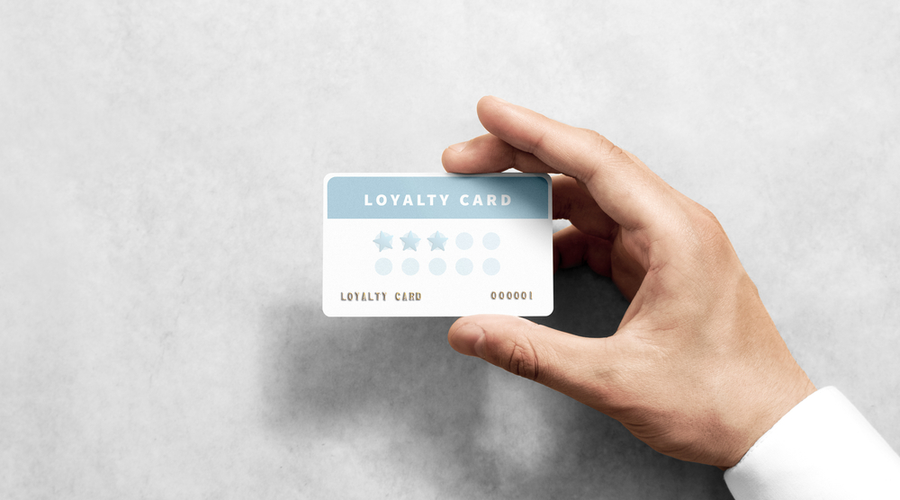Loyal patients are the fuel that keeps your pharmacy going. They are the people who recommend your pharmacy to their friends and family and increase overall brand awareness in the community.
A customer loyalty program will keep your highest value patients happy with your pharmacy by rewarding their consistency and incentivizing further engagement.
Rewards have a powerful impact on how people shop — a recent study from Wirecard found that potential incentives always or often sway where 75 percent of people shop.
By launching a loyalty program, you can capture that fervor for rewards. Here’s everything you need to know to get your customer loyalty program off the ground.
Decide on a format for your loyalty program
Not every loyalty program functions in the same way. You can incorporate elements from different types of loyalty rewards programs to tailor your program to patient needs.
These are the most common loyalty program formats and examples from businesses that make them work.
Punch card
Long a favorite of local coffee shops and sandwich restaurants, a punch card loyalty system is simple to launch.
Every time your patients make a qualifying purchase — like spending $10 at your pharmacy — they get a stamp or punch on a wallet-sized card. When they get 10 punches, they get a reward — like $10 off their next front-end purchase.
Punch cards are a low-tech, low-cost way to get patients hooked into a loyalty program. The program is also easy to understand, and patients won’t have to download any new technology.
The downside is that it’s easy for patients to cheat the system and add their own punches to get rewards early. Consider using a custom stamp so it’s harder for patients to break the rules.
Points system
With a points-based loyalty system, your pharmacy will issue patients points based on their purchases, which are tracked digitally. Points can be redeemed for rewards at different amounts.
Starbucks had one of the first popular points-based loyalty programs, with customers earning “stars” for their purchases and then redeeming them for free drinks or food. Now, retailers like Chipotle, Target, and McDonald’s have their own points-based loyalty program.
Since points-based programs are so common, your patients probably already know how to use them. If you use an app, you can collect information to gain insights on customers for better marketing and business decisions.
However, points-based programs also require a lot of management. You’ll need to make a technological investment to get it off the ground and you’ll have to count outstanding points as a liability on your balance sheet.
Referral rewards
Word-of-mouth marketing is critical for increasing brand awareness in your community, and you can instill loyalty in your current patients by rewarding their word-of-mouth referrals.
Hello Fresh incentivizes referrals by offering customers a discount every time one of their friends uses the service for the first time — and the referred friend also gets a discount. This is known as a two-way incentive program. You can also run one-way incentives, where you reward either the referer or the referred, but not both.
At your pharmacy, you can run a referral program by simply asking new patients if someone recommended them and noting the name to reward them later.
You can also run a referral campaign via email and provide patients with a personalized coupon they can share with their friends.
When referral programs have rewards attached, patients will be eager to spread the word about your business. However, if you offer two-way incentives, you may find yourself giving out more rewards than you’re comfortable with, and programs with one-way incentives won’t have as much buy-in.
Referral rewards also create an administrative burden, because you have to keep track of who referred whom.
VIP program
A VIP program will give your pharmacy a high-end feel. These programs reward your most loyal patients. They either buy into the program by paying a fee or they are let into the program after they spend a certain amount of money at your pharmacy.
As a very important person, members of the program should have access to products and services that your regular patients don’t. This might mean regular discounts or early opportunities to make appointments for in-demand services.
For example, Sephora’s “Beauty Insider” program kicks in when customers spend $350, and Insiders get special perks like birthday gifts and exclusive discounts.
VIP programs will keep your highest value patients coming back, but they are often extremely expensive to keep running, and they ultimately only reach a small percentage of your patients.
Offer comprehensive rewards
A comprehensive loyalty program will offer a variety of rewards for a variety of different behaviors.
Rewarding purchases is obvious, but you can encourage patients to engage in the program even without buying. You can use rewards to incentivize behaviors like downloading the pharmacy app, following the pharmacy’s social media pages, or subscribing to an email newsletter.
Make the program worth its while by offering reward options that patients are actually interested in. Offering a cash discount on future purchases is an old standard, but you can also get creative. Give them the option for cashback, but offer them alternatives like the opportunity to try a new supplement or beauty product.
Rewards can also be an opportunity to market what your pharmacy has to offer.
Promote aggressively
When you launch your program, use every tool in your marketing arsenal to let patients know about it. Push the program through your normal marketing channels — email, social media, print ads, in-store, and more.
Give patients immediate gratification by offering a sign-up bonus, like giving them their very first reward just for joining the program.
After the initial launch is over, don’t stop promoting the program. Keep reminding patients about what they have to gain by joining the program and show off rewards that other patients are earning.
Aim for a certain number of sign-ups every month as one of your pharmacy goals. You’ll need a steady stream of new enrollments to make the program worthwhile, as some patients will inevitably drop off.
Offer several enrollment channels
If the only way patients can enroll in your customer loyalty program is by filling out a form at the pharmacy counter, you’re not going to get too many takers.
Make it easy for patients to enroll by offering multiple avenues for signup. They could follow a link from your social media pages or sign up on the app or click through something in your email newsletter.
Signing up for the program should be simple and accessible, and by providing multiple sign-up channels, you can meet more patients where they are most comfortable.
Work to improve
Once your loyalty program is up and running, pay attention to how your patients are using it. A few metrics that could be insightful include:
- Participation rate: How many people are actually using the program compared to how many people are enrolled
- Redemption rate: How many rewards are redeemed compared to how many rewards are issued
- Net Promoter Score: Asking members how likely they are to recommend the program
Keep an eye on how these metrics change throughout the life of your program. If you find your redemption rate is dipping, you may need to change up your rewards to make them more appealing. If your participation rate drops off, you can run a targeted campaign to members who haven’t visited the store in a while.
Don’t be afraid to tweak the program to make improvements as you learn more about how your patients are engaging with it.
Know potential pitfalls
Loyalty programs can keep your patients engaged, but they come at a cost if they aren’t properly managed. Be aware of these pitfalls to avoid wasting precious pharmacy resources on an inefficient loyalty program.
Can hurt the bottom line
With loyalty programs come rewards, and if your program takes off, you could find yourself spending more than you can afford to reward your patients. For a program to work, rewards need to be worth something to patients, and it can be hard to strike a balance between things that are appealing to patients while still being affordable for you.
Even just getting them off the ground can end up costing a hefty amount, especially if the program requires you to implement new technology.
Loyalty programs will also cost you in labor, as you or one of your employees will need to track rewards and manage any customer service issues with the program.
Be sure to track what you’re spending on the program to make sure it’s not sending your pharmacy into the red.
Increased data burden
When patients enroll in a loyalty program, they often give you access to data about how they spend money. For bigger companies, this could be a “pro,” but for a small business, handling all that information can end up being a burden.
If you don’t have a data-savvy person on staff, parsing through the numbers to determine if the program is worth it will be a time-consuming task, and without the right expertise, you may not come to an accurate conclusion.
You also have to worry about securing the data. If someone breaches your computer systems, patients will regret trusting you with their private purchasing information.
Difficult to make changes
If you launch a loyalty program that your patients love, any change to that program could upset your most loyal patients.
Changing how points are allocated or what rewards patients have access to — even if it makes the program run more smoothly — will be frustrating to patients who liked the previous system.
When you do need to make changes, communicate them well in advance so patients have a chance to get used to the idea instead of being taken by surprise. Since patients who are active in your loyalty program are some of your most high-value customers, you don’t want to make changes that will outrage them and send them to competitors.
A Member-Owned Company Serving Independent Pharmacies
PBA Health is dedicated to helping independent pharmacies reach their full potential on the buy-side of their business. Founded and owned by pharmacists, PBA Health serves independent pharmacies with group purchasing services, wholesaler contract negotiations, proprietary purchasing tools, and more.
An HDA member, PBA Health operates its own NABP-accredited secondary wholesaler with more than 6,000 SKUs, including brands, generics, narcotics CII-CV, cold-storage products, and over-the-counter (OTC) products — offering the lowest prices in the secondary market.












